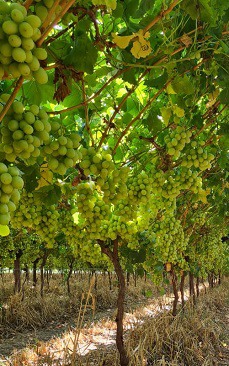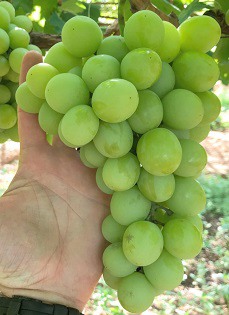 There’s just not been strong demand from any market in the Far East for table grapes, traders say, and in China they’re hoping the many containers of Chilean cherries that went unsold before Chinese New Year will have been absorbed by the end of February.
There’s just not been strong demand from any market in the Far East for table grapes, traders say, and in China they’re hoping the many containers of Chilean cherries that went unsold before Chinese New Year will have been absorbed by the end of February.
“Last year we didn’t really feel the effect of the Covid pandemic,” a Southeast Asia fruit specialist says, referring to the South African grape campaign that was winding down when the pandemic's extent became clear.
“This year we’re definitely experiencing it. The appetite for risk is extremely low, there’s a conservative approach and buyers are more aggressive on pricing, not only for grapes but also for stonefruit.”
(There is one thing at the moment for which "everyone is jumping up and down", he remarks, and that is lemons.)
Australia and China’s current fractious trade relationship does create opportunities for South Africa in the Chinese grape market, but more Australian grapes exported to other Southeast Asian countries like Vietnam put these markets under more pressure.
Malaysia’s hard lockdown discouraged many traders from that market.
Limited appetite from the market
Chinese buyers have been extremely selective, and they are adamant that they’re only taking Sweet Globe and Autumn Crisp, he says, and a mere 5% deviance from the quality specification results in a disproportionate impact on the product's sales value.
"My feeling is that they're even stricter this year," he notes, "and it's because the market's appetite is fairly limited."
 “What did cause an uplift was the news of the rain in Chile which stimulated demand for South Africa’s Autumn Crisp and Sweet Globe, but it absolutely has to be the right quality.”
“What did cause an uplift was the news of the rain in Chile which stimulated demand for South Africa’s Autumn Crisp and Sweet Globe, but it absolutely has to be the right quality.”
He notes that in China, Peruvian Sweet Globe had a selling price far above that of South African grapes; with the rain damage to Orange River grapes it was difficult for South Africa to compete.
“The Peruvian product sells between 170 and 180 RMB while South Africa varieties are straggling behind for 90RMB or, if you’re lucky, up to 120RMB. It’s only now that we’re getting into our stride with the varieties the market is looking for.”
"It's not as good as it was last year"
Another grape exporter calls it a disastrous season in the Orange River and he puts forward South Africa’s quality for the low export volumes to China – lower than previous years as measured by week 6, although this season did start two weeks later than usual.
“Our quality just hasn’t been exactly where it should be and our arrivals in China have been far from perfect. We’re speculating that the reason has been high humidity in the Western Cape. Usually Paarl [Berg River region] is more humid than the Hex but for the past month and a half the humidity in the Hex has been higher and there has been a bit of rain.”
He adds: “As for colour and sizing it’s a pretty average season, I’d say.”
Another confirms: "It's definitely not a vintage year for quality. It's not as good as it was last year."
They’re hoping for better opportunities for South African grapes in March and April – but that only holds for high-quality grapes, an exporter cautions.
The Crimson harvest is about a fifth through in the Hex River Valley, along with the varieties mentioned above as well as Allison, Sweet Joy and Scarlotta Seedless. The regions outside the Western Cape have ended their table grape campaign.
South Africa has exported over 40 million 4.5kg cartons by week 6, 78% of which to the European Union and the UK, slightly higher than usual. It is a market segmentation the South African table grape industry is keen to alter through becoming more significant to China as a table grape producer.
